Here's how to make an easy and beautiful coral tuile garnish to elevate your dishes and make them stand out on special occasions. Edible coral (as it is also known) is a fancy garnish often used in high-end restaurants, and it's a lot easier to replicate at home than you might think! I'll go through the ingredients and cooking tips for making a basic coral tuile and then show you some ways of adding flavor to a coral tuile.
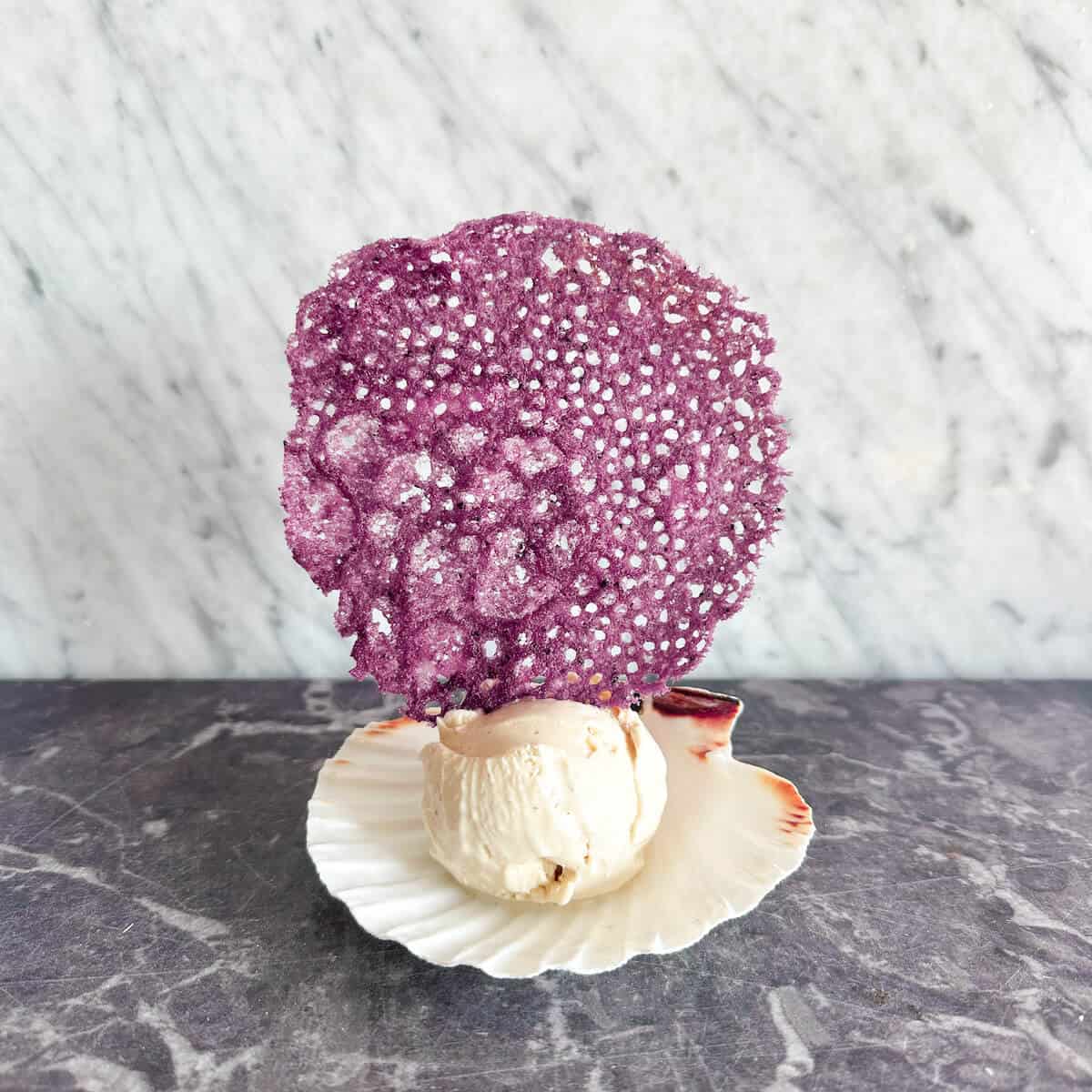
I did a real deep dive into this fancy garnish recipe, trying lots of different flours, methods, and equipment. It is very easy, but not simple. Little culinary flairs like this need precision to get right, but once you've nailed it, a coral tuile is such a fun thing to make for dinner party dishes that make them instantly look elegant and refined. Plus, it makes everyday cooking fun!
Jump to:
📖 Ingredients List
This lace tuile recipe uses very simple ingredients, but it requires reading essential technique notes for success.

- Flour—I have tested various flours to find the best kind of flour for a coral tuile. I prefer to use cornstarch (called cornflour in the UK), which not only garnered the best results for me but also makes the coral tuile gluten-free. I found that all-purpose flour (plain flour) sometimes made the lace tuiles a bit pancakey. As cornstarch is such a powdery, fine grain, I then tried pastry flour and 00 flour (pasta flour), which are both lower protein, fine-milled flours, and also got good results. Do not use self-raising flour, as this contains baking powder, and you will end up with pancakes.
- Oil - Any neutral oil with a high smoke point is fine. I prefer to use canola oil, sunflower oil, vegetable oil, or a mild olive oil. You can use oils that have a strong flavor (like coconut oil) but bear in mind that this will leech into the lace tuile flavor and, therefore, affect the dish you are garnishing. We fry the coral tuile in a very hot pan, so the hot oil needs to be safe at high temperatures.
- Water - The water rapidly evaporates in the hot pan, leaving the oil to cook the flour suspended in the emulsion. This is what causes the lace pattern to emerge.
- Food coloring - This is optional. Only use powdered food coloring, not gel food coloring or liquid food coloring which will affect the consistency of the emulsion. Without food coloring, your coral tuiles will be pale and beige in color.
See the printable recipe card at the bottom of this post for full quantities and step-by-step directions on how to make edible coral tuille.
👩🏼🍳 How to make coral tuile
Here is the basic method of making a savory coral tuille garnish. Then I have listed a few variations and adaptations (e.g., how to add flavor and color).

Measure and weigh the water, oil, and flour into a squeeze bottle or jug. Shake or whisk it together to fully emulsify.
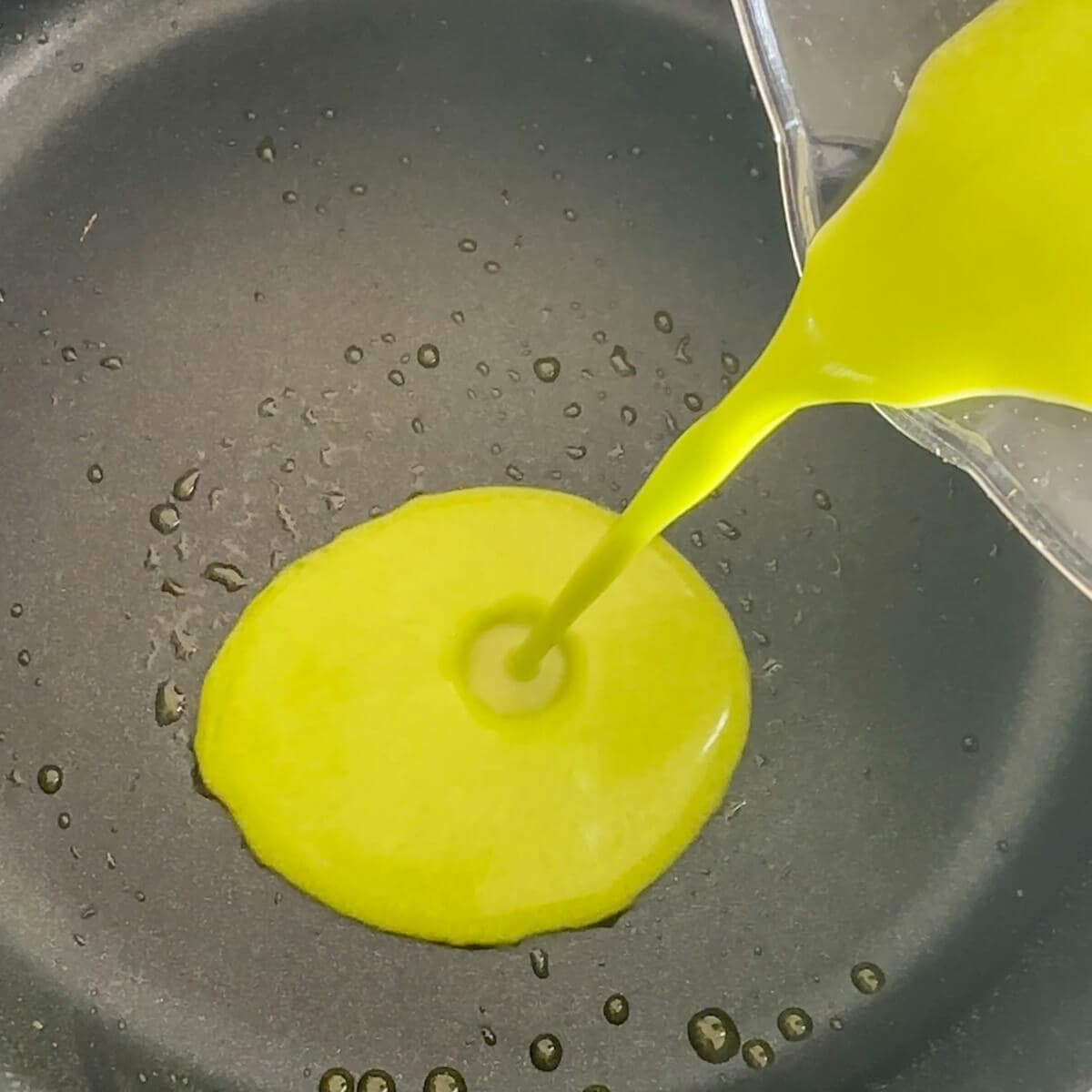
Place a flat, non-stick pan over medium-high heat. When it is very hot, pour the coral tuille mixture into the pan to your desired size.
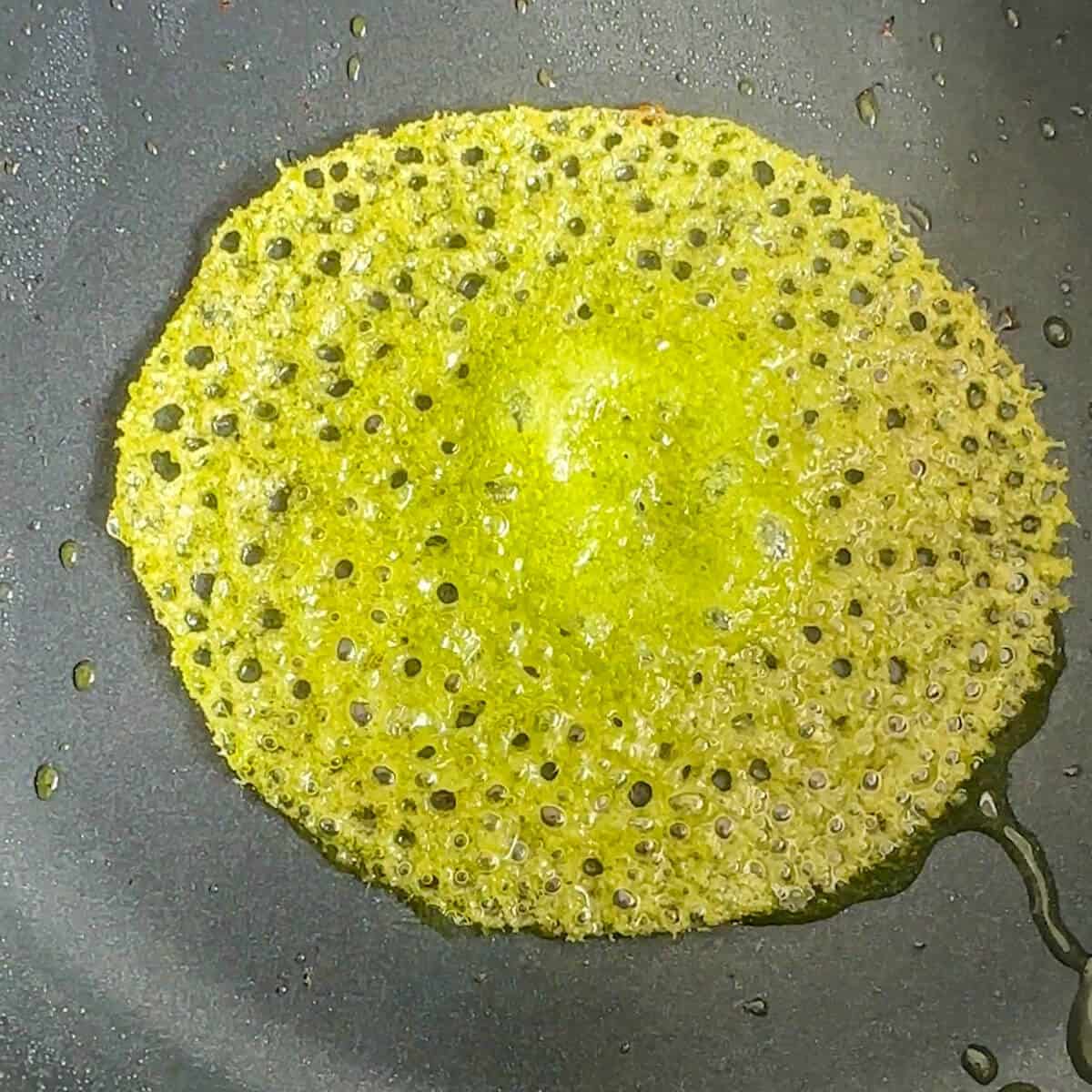
The mixture will sizzle aggressively as the water evaporates and the oil cooks the cornflour. A coral pattern will emerge and after a few minutes, the edges will start to curl upwards.

Use a flat spatula or palette knife to gently lift the coral tuille up and remove it to a paper towel-lined plate to soak up excess oil before cooking the next coral tuille. To get a curved shape, lay the warm tuile over a rolling pin covered with kitchen paper once cooked.
🌟 Top Tip
You want the mixture to hit the pan at speed so that it spreads out quickly. If the mixture in the pan is too thick, it will become a pancake. If you are using a squeeze bottle, squeeze it quite hard to emit the liquid. If pouring from a jug or measuring cylinder, pour it from around a foot above the pan to get a gravity assist. Isn't science cooking fun?
How to make a colored coral tuile
- Add a pinch of powdered food coloring (not gel or liquid) to the oil, water, and flour mixture before blending. Squid ink is also commonly used as a coloring for a savory tuile garnish, simply replace a teaspoon of water with a teaspoon of squid ink.
- Use this mixture as per the method above.
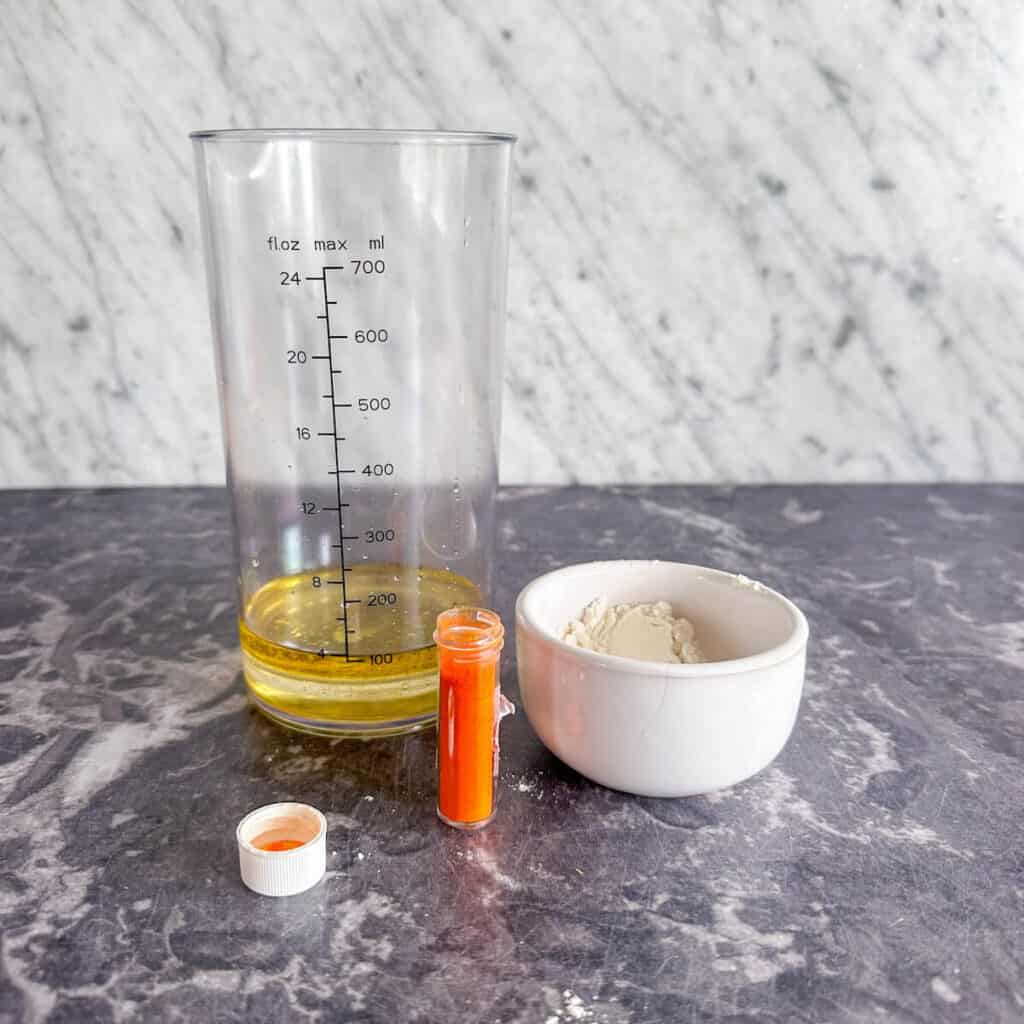
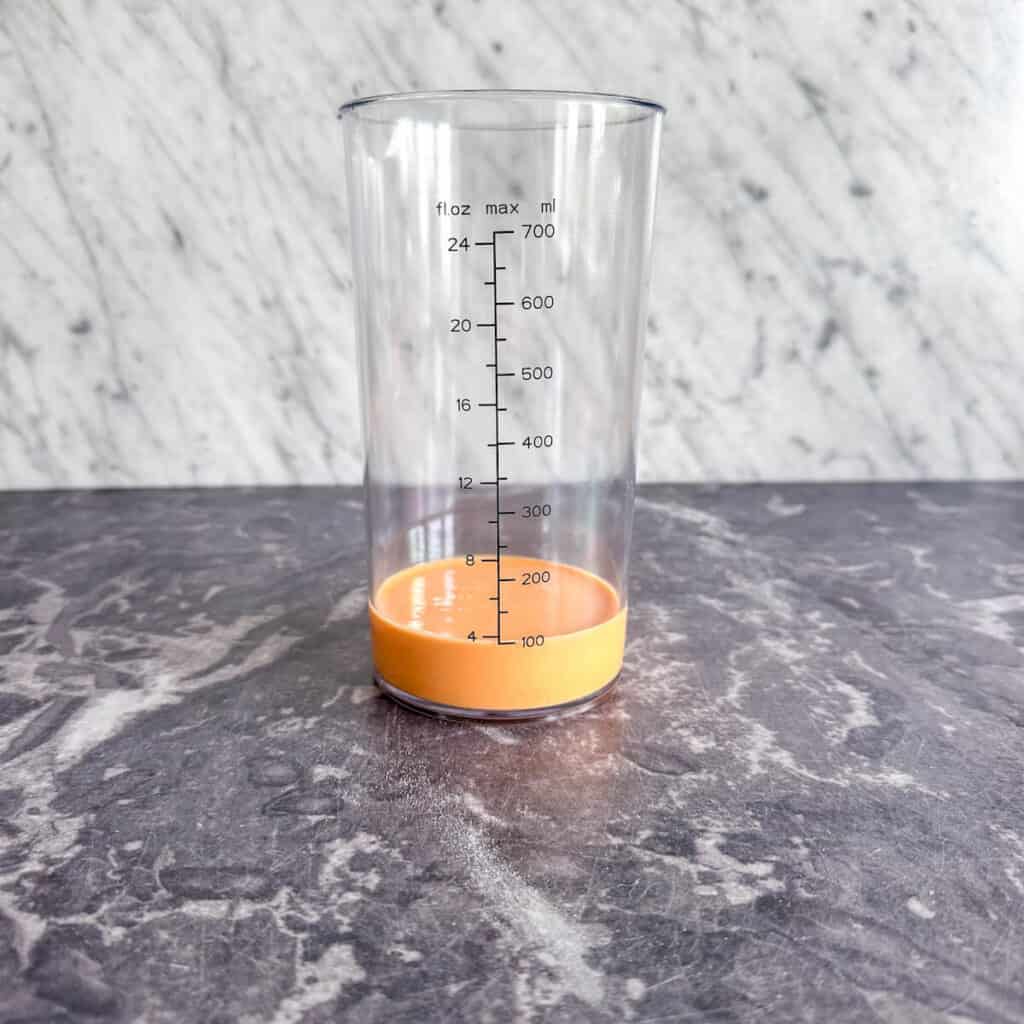
How to use herbs to make a flavored coral tuile
For best results, you will need to infuse both the water and the oil with the herbs.
- Tear a handful of fresh herbs into pieces and place them into a heat-proof jug. Alternatively, use a tablespoon of dried herbs.
- Heat the oil until it is just warm, and then turn off the heat and stir in the herbs. Allow to cool completely, then pour the oil through a sieve or strainer into a sterilized bottle. Leave in a cool, dark place for a week to let the flavors develop.
- Steep another handful of fresh herbs in boiled water for 5 minutes, and allow it to cool completely.
- Blend the water and herbs together, and then sieve (keeping the liquid).
- Use this water and the flavored oil in the method above.
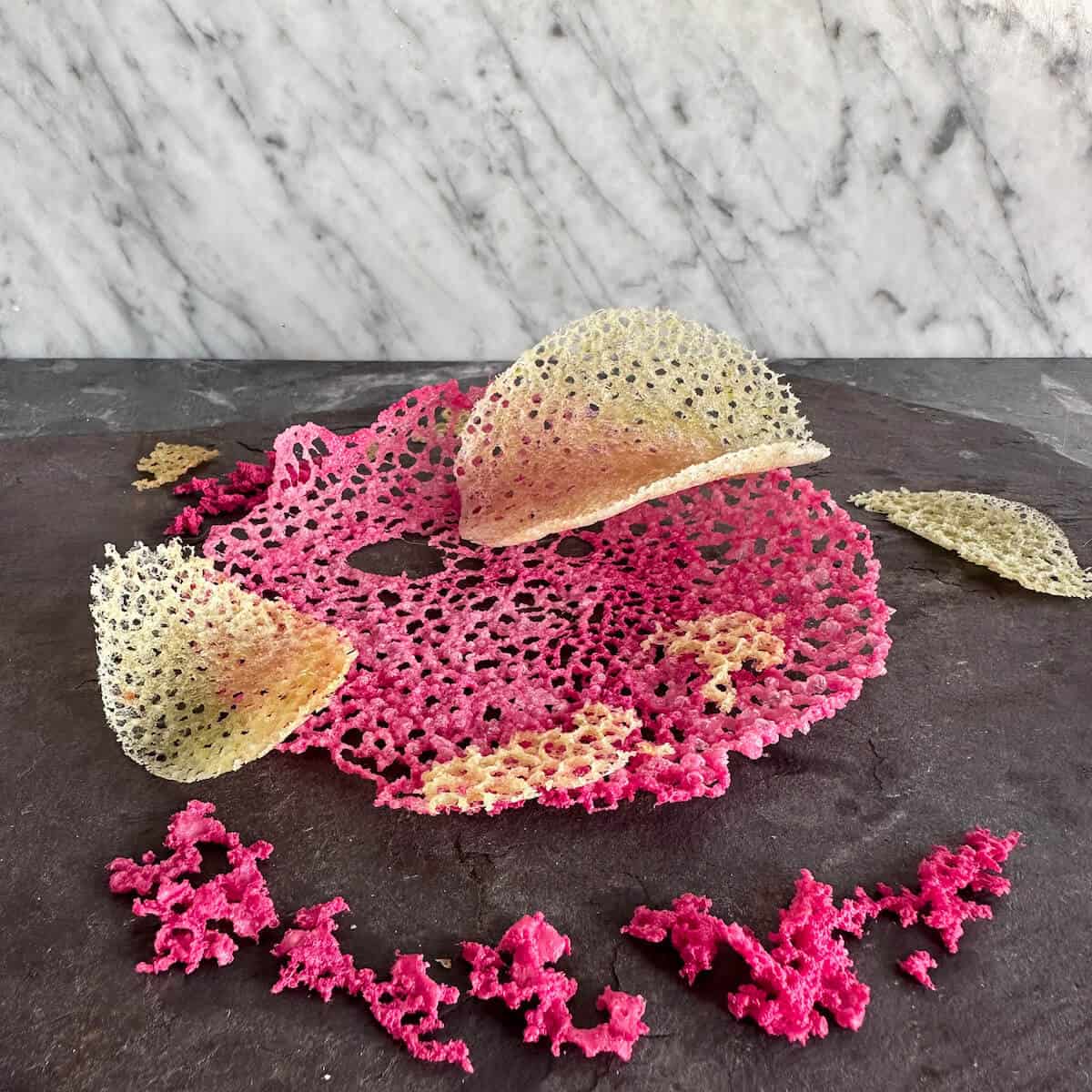
How to use spices to make a coral tuile
You will also need to infuse the oil for this method. Just adding the spices straight to the mixture does not work, as they burn when you fry the lace tuile.
- Heat the oil with a teaspoon of spices (e.g., cinnamon, chili pepper flakes, cumin seeds, ground cardamom pods) until it is just warm. Allow to cool completely and then sieve it into a sterilized bottle. Leave in a cool, dark place for a week to let the flavors fully develop.
- Use this flavored oil in the method above.
🌟 Top Tip
It is vital that the pan you use is non-stick, has good heat distribution, and has a completely flat base (i.e., it is not warped or curves up at the edges). If your pan does not have these attributes, the recipe will fail.

👩🏼🍳 How to use Coral Tuile
You can make circular discs of edible coral or random shapes as they look good broken up in pieces on the plate. Break them up with your hands or use a pair of scissors. They are very versatile. Use them as a dessert coral tuile to elevate and garnish desserts like ice creams or a mango passion fruit eton mess or on savory dishes like a samphire risotto. They also work well as a garnish for cocktails.
❄️ Storage & Freezing
Store coral tuile garnish in an airtight container, and use within one week. To keep coral tuile crisp, wait until they are completely cooled before storing and add a silica gel sachet to the container with them. Do not freeze coral tuile.
🥣 Equipment
Weigh ingredients by the gram with a digital scale for accuracy. A good-quality, flat, non-stick frying pan is essential for this recipe to succeed. The pan cannot be warped or have a domed base; it needs to have a completely level, flat base. A crepe pan can work well, as they always have to be very flat. But beware—this coral tuile recipe spits a lot as you cook it, so the low sides of a crepe pan offer much less protection. Use a grease splatter guard/splatter shield, wear an apron, and use cooking gloves if necessary.
I tried blending the mixture with an Immersion blender but found it added too much air into the mixture, which affected the way it cooked. So don't overmix it. Honestly, putting all the ingredients into Squeeze bottles and just shaking them is the best option.
❓Recipe FAQ
Coral tuile is an edible garnish or decorative element for food, that resembles coral or lace. Coral lace tuiles are often used in restaurants and can be colored or flavored.
Water, oil, and flour are the ingredients for a savory tuile, plus food coloring. They can also be flavored using infused oils.
Tuile is a French word for "tile" and it is used in this baked wafer recipe in reference to the curved shape of French roof tiles.
🍽 More garnishes and food styling
Here are more ways you can upstyle your entertaining and create beautiful restaurant-style dishes at home.
📖 Recipe
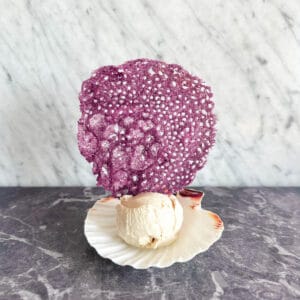
How To Make An Edible Coral Tuile Garnish
Ingredients
- 40 g (⅓ cup) Cornstarch (cornflour) or pastry flour, or pasta flour
- 100 ml (⅖ cup) Water
- 100 ml (⅖ cup) Oil
- ½ teaspoon (0.5 teaspoon) Food coloring (powdered)
Instructions
- Measure and weigh the water, oil, food coloring, and flour together into a squeeze bottle or jug and shake/whisk them together until the mixture has fully emulsified.
- Place a nonstick pan over medium-high heat, and once hot, pour the coral tuile mixture into it to just cover the whole base or in smaller circles.
- The mixture will sizzle aggressively as the water evaporates away and the flour cooks in the oil. Once the lace tuile has formed, the liquid has cooked off, and the edges are curling up at the edges; gently prise it away from the pan using a silicon spatula or palette knife. Remove them to a paper towel-lined plate before starting the next one.

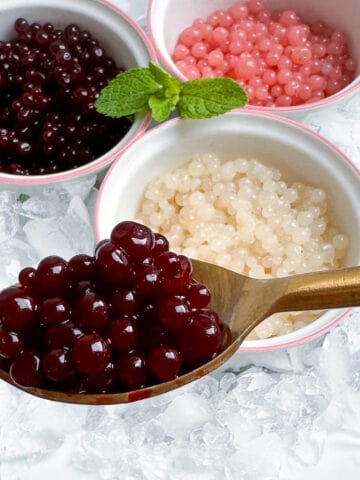

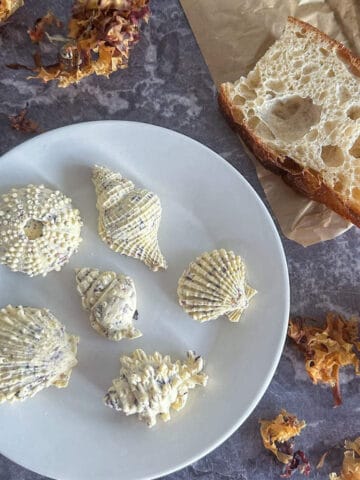
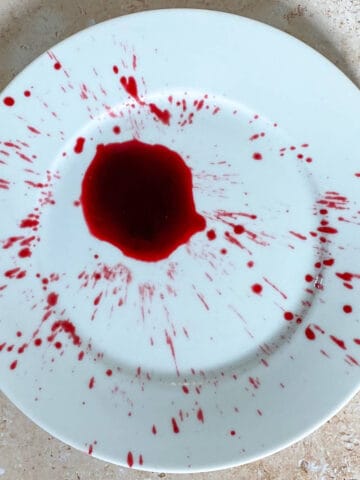

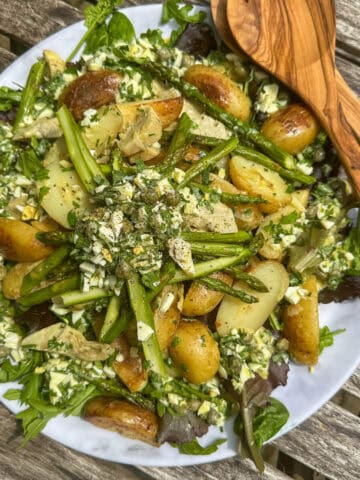



Comments
No Comments